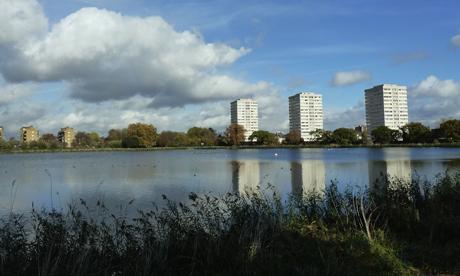Silt dredging begins to create new wildlife habitat on Woodberry Wetlands

One of the reservoirs that will form part of the Woodberry Wetlands scheme. Photograph: London Wildlife Trust.
A four-metre layer of silt is being dredged from the bottom of Stoke Newington’s East Reservoir to create a new wildlife habitat for nature reserve Woodberry Wetlands.
The silt, which will be scooped up using aquatic diggers, will be placed behind submerged fences made of hazel and chestnut to create over 13,000 square metres of new reedbed.
The islands and ponds will be connected by channels and extend the current wildlife habitat for species including reed bunting, reed warblers, kingfishers and one of the UK’s rarest breeding birds, wintering bittern.
Planting will take place over the summer, with local volunteers helping to plant new reed shoots from a floating pontoon on the reservoir.
The London Wildlife Trust received £1.5 million from the Heritage Lottery Fund in September to convert the reservoir into a nature reserve.
Woodberry Wetlands will have a new bridge, boardwalk, cafe and visitor centre where the public can learn about urban wildlife.
David Mooney, London Wildlife Trust’s East London Development Manager: “This is large scale nature conservation in the heart of London. As Woodberry Wetlands develops it will become increasingly important for wildlife and people seeking nature and tranquillity in the midst of a hectic city.”
“Using the silt that has built up naturally in the reservoir we will create a network of interconnecting, wildlife-friendly habitats and micro-habitats that will provide a fascinating window on nature for school groups and other visitors.”
Funding of £39,500 was awarded from The Veolia Environmental Trust through the Landfill Communities Fund, for the work to take place.
The East Reservoir was constructed in 1833 to hold water from the New River, which had been supplying fresh water from Hertfordshire to London since 1613. Over the last 80 years the New River has gradually deposited a layer of silt that now lies up to 4-metres thick on the reservoir bed.
Woodberry Wetlands are currently closed to the public but will open this summer for free public access.
